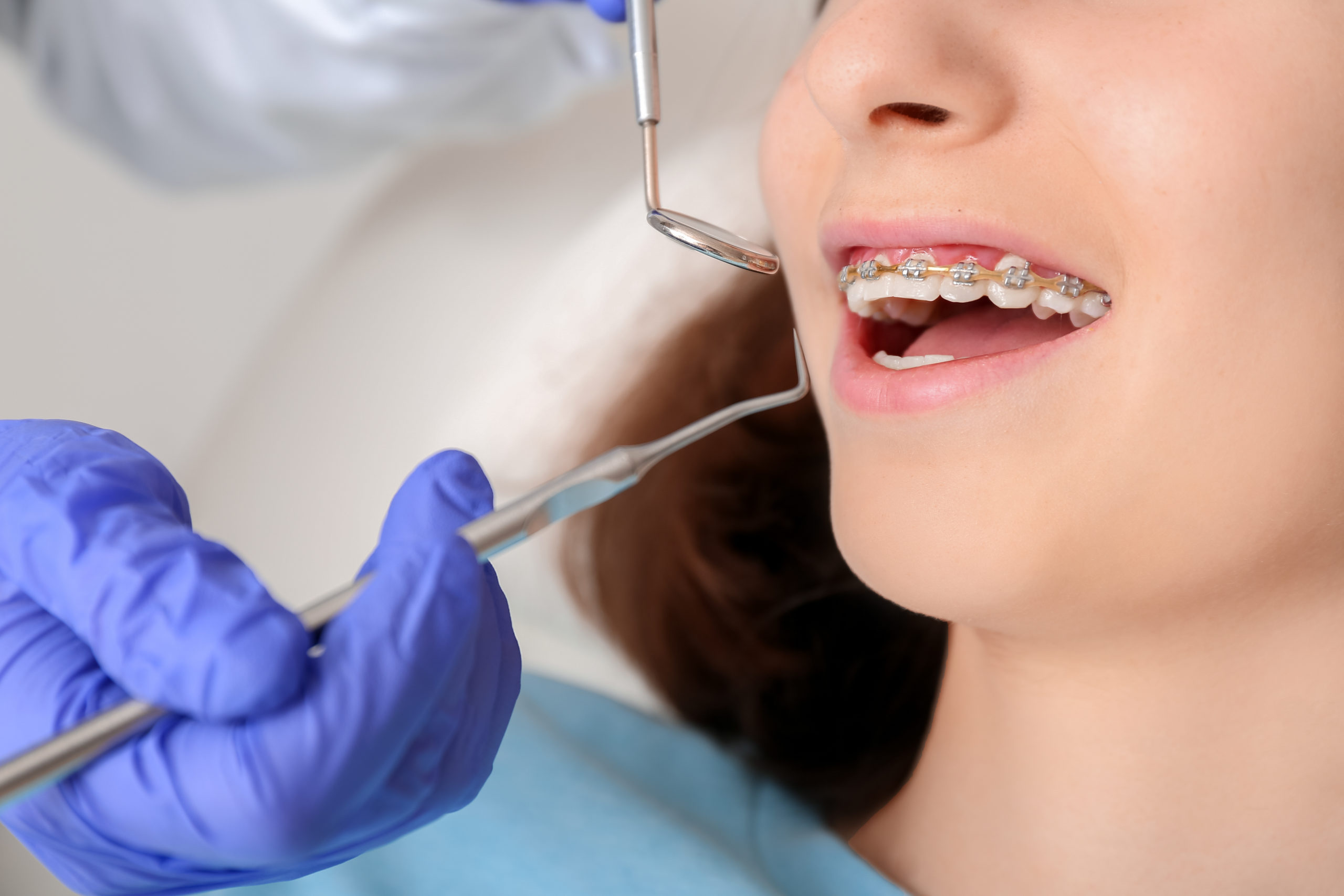How Cumming Orthodontics Addresses Common Braces and Invisalign Worries
How Cumming Orthodontics Addresses Common Braces and Invisalign Worries
Blog Article
Comprehensive Overview to Orthodontics Procedures for Correcting Dental Misalignments
In the world of orthodontics, the journey to accomplishing a perfectly aligned smile includes a myriad of treatments tailored to fix dental imbalances. From typical braces to invisible aligners and even surgical choices, the area of orthodontics supplies a variety of services to resolve differing degrees of oral abnormalities. Comprehending the intricacies of each procedure, including their devices, benefits, and possible disadvantages, is important in making notified decisions regarding one's orthodontic therapy. As we browse with the detailed guide to orthodontic procedures for remedying dental imbalances, the elaborate details of each method will unfold, clarifying the course towards a harmonious and functional dental placement.
Orthodontic Procedures Summary

In enhancement to traditional dental braces and clear aligners, orthodontists might additionally advise various other treatments like headgear, palatal expanders, or retainers to address particular positioning problems (invisalign). These procedures are tailored per client's distinct requirements and might include a mix of treatments to achieve the wanted outcomes. Routine changes and monitoring are vital components of orthodontic treatment to ensure progress gets on track and to make any type of required alterations along the road. By going through orthodontic procedures, individuals can not just accomplish a straighter grin yet likewise enhance their general oral health and function.
Conventional Braces: Just How They Work
When considering orthodontic treatments for dental misalignments, conventional dental braces stand apart as a time-tested method for remedying teeth placing. Traditional braces contain brackets, cables, and bands that interact to apply constant stress on the teeth, progressively moving them right into the desired placement. The brackets are affixed to the teeth making use of an unique adhesive, and the cables are threaded through the braces. By adjusting the stress of the cables, orthodontists can regulate the instructions and pressure applied to each tooth, directing them into appropriate placement in time.
As pressure is used to the teeth via the braces, the bone surrounding the teeth is improved to sustain the new tooth positions. Individuals will need regular modifications at the orthodontist's office to ensure the dental braces proceed to use the proper stress for effective teeth movement.
Undetectable Aligners: Benefits And Drawbacks
These clear, customized trays are essentially undetectable when put on, making them an attractive option for people seeking an extra aesthetically pleasing orthodontic treatment. Clients can remove the aligners before consuming or cleaning their teeth, minimizing the danger of food getting stuck in the home appliance and simplifying the cleansing process.

Surgical Orthodontic Options
Surgical interventions in orthodontics present practical options for resolving intricate dental imbalances that might not be efficiently dealt with via traditional orthodontic treatments. While unseen aligners and typical dental braces can deal with many orthodontic concerns, certain situations need surgical intervention to achieve ideal results. Surgical orthodontic choices are typically recommended for extreme malocclusions, considerable jaw disparities, and cases where the underlying bone framework requires modification to achieve correct placement.
One common surgical orthodontic treatment is orthognathic surgical procedure, which involves repositioning the jaws to correct practical issues such as difficulty eating or talking. This surgical procedure is typically carried out in collaboration with an orthodontist that aids straighten the teeth prior to and after the treatment. Surgical orthodontics may also involve procedures to reveal affected teeth, remove excess periodontal cells, or reshape the jawbone to develop a more unified facial account.
Before thinking about surgical orthodontic choices, patients go through a comprehensive analysis to identify the need and potential advantages of such interventions. invisalign. While surgical procedure may appear difficult, it can significantly enhance both the feature and visual appeals of the smile in situations where standard orthodontic treatments fall short
Retainers and Post-Treatment Treatment

Post-treatment treatment involves adhering to the orthodontist's guidelines diligently. This might include appropriate oral health techniques, going to follow-up appointments, and wearing the retainers as prescribed. Failure to abide with post-treatment care instructions can lead to relapse, where the teeth progressively return in the direction of their initial placements. Regular retainer wear, good dental health, and regular oral check-ups are important for preserving the results accomplished with orthodontic surgical treatment what does a dentist do and making sure the long-lasting stability of the fixed dental positioning.
Final Thought
To conclude, orthodontic procedures offer numerous choices for fixing dental imbalances. Standard braces make use of metal brackets and cords to move teeth into correct positioning. Unnoticeable aligners provide an even more discreet choice however may not be ideal for all situations. Surgical orthodontic options are readily available for much more severe imbalances. Retainers are typically made use of post-treatment to preserve the brand-new positioning. Overall, orthodontic treatments can efficiently boost dental wellness and aesthetic look.
As we navigate with the comprehensive guide to orthodontic procedures for dealing with oral imbalances, the complex information of each technique will certainly unfold, losing light on the course towards a useful and harmonious oral alignment. - aligners
One of the most usual orthodontic therapies is the use of braces, which consist of steel braces and cords that apply gentle pressure to slowly change teeth right into the desired position.When thinking about orthodontic therapies for oral imbalances, traditional dental braces stand out as a reliable approach for correcting teeth positioning. Additionally, undetectable aligners might not be appropriate for intricate orthodontic concerns that call for even more substantial teeth movement, as they are generally recommended for mild to moderate cases. Retainers are customized orthodontic gadgets developed to hold teeth your family dentist in their remedied settings after the completion of orthodontic treatment.
Report this page